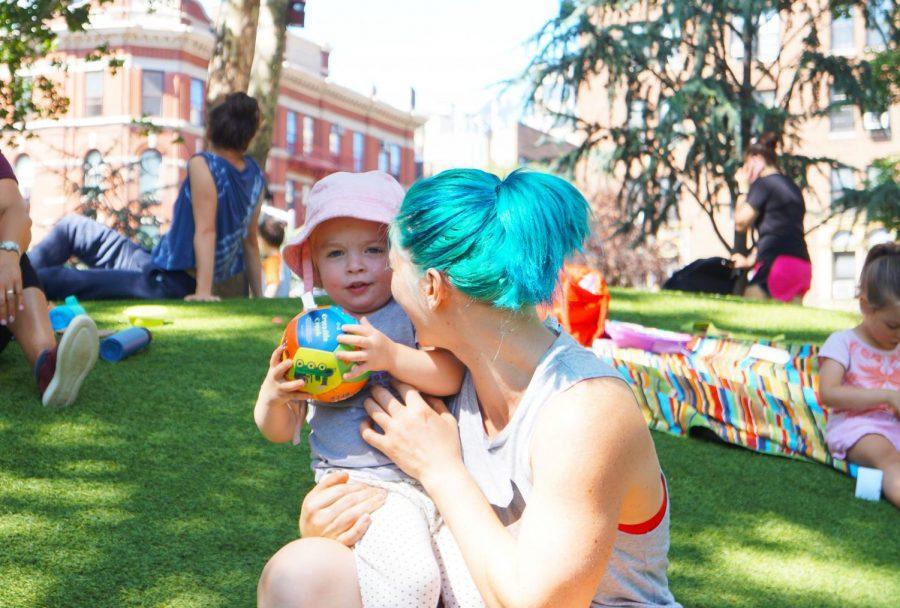A Year of Parenting on Tape — NYU Researchers to Study Moms and Babies
Mom and child playing in Washington Square Park.
September 12, 2018
It’d be difficult to conceive of a more cathartic study: NYU scientists will soon begin work compiling videos of 900 mothers playing with their infants.
By observing the infants’ behavior over the course of a year, researchers hope to better understand the long term effects of parental behavior on child development.
Researchers will take videos of over 900 infants between the ages of 12 and 24 months at 30 different locations across the nation. Participants will represent different family, educational, racial and ethnic backgrounds. The research leaders banded together a group of over 65 professors across the U.S. and Canada to join the initiative, each contributing their own video data.
The project, titled Play and Learning Across a Year, is being funded by a $6.3 million grant from the National Institute of Health. Professor of Psychology and Neural Science Karen Adolph and Steinhardt Professor of Applied Psychology Catherine Tamis-LeMonda will lead the research with the help of Pennsylvania State University Professor Rick Gilmore.
“We have been studying child learning for decades based on tasks that researchers create in the lab, but relatively little research studies what infants actually learn in the home and how parents are providing those opportunities for learning,” said Scientific Director of PLAY Kasey Soska told WSN.
According to Adolph, the novelty of the project is the medium of data collection — video recordings, as opposed to written reports. Even protocols for experimenters — such as instruction on how home videotapes should be installed unobtrusively — will be recorded on video.
Following the data collection, videos will be annotated systemically, with particular attention paid to the infants’ and mothers’ speech, emotion and movement as a means of determining the impact of parental traits on infant behavior.
“The ability to talk and communicate changes how people interact with you and your opportunities for learning,” Adolph said. “The 12 month olds — half of them will be crawling and half of them will be walking. The ability to walk allows babies to move much faster, much farther, and to see more of the environment. At 18 months, babies are now talking a little bit.”
Following the study, the annotated videos will be shared securely with other researchers through Databrary, an online video-sharing library used at more than 400 institutions around the world. Researchers will be granted open access to both the videos and the data collection methods through this platform.
The PLAY project may be a crucial step forward in bringing the reporting of scientific research into modern times. In previous studies of this nature, data and findings were exclusively published in scientific journals and often were not easily accessible online.
“I am excited about the open availability of the data, which will spark new questions for many years to come, but also provide a springboard for others in our field to consider ways to openly share their methods, findings and data through video-based sharing with the broader scientific community,” Tamis-LeMonda said.
Email Lavanya Shukla at [email protected].


























































































































































